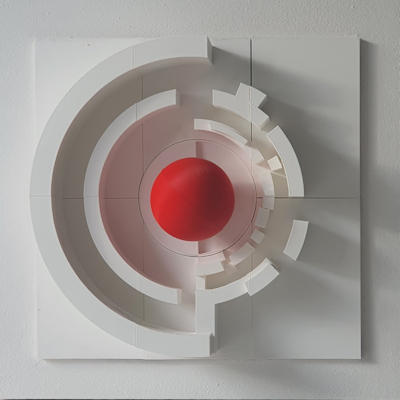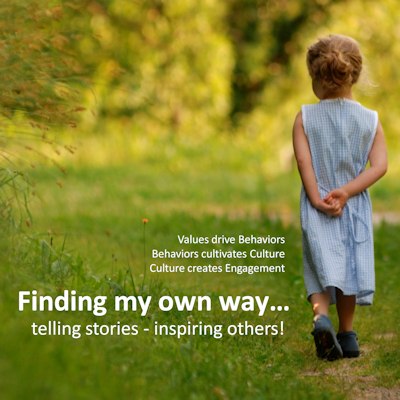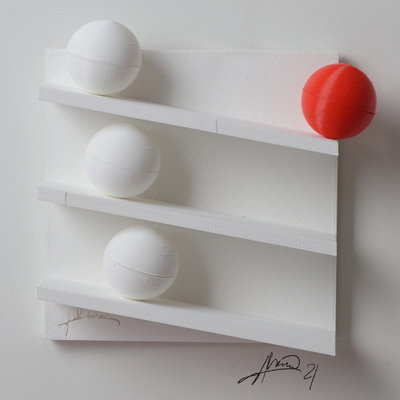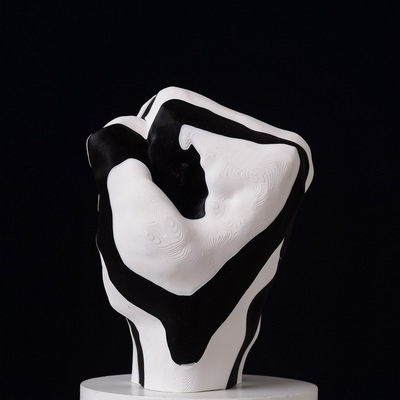REVISITED: Digital Trends challenging the art market
In May 2022, I wrote a guest article exploring the impact of digital technologies on the art market. As both being a technologist and an artist, I believe it is essential to anticipate trends and understand how emerging technologies can be leveraged to benefit artists and galleries. And the most important aim: Increasing the value and experience for the art collector.
An bad example: 35 years ago with my first salary I have bought with my first salary a sculpture by Josep Bofill by as a gift for my parents. I recently have traced the sculpture and stumbled on a gallery offering the 'bronze sculpture' as bronze, while actually the sculpture is made in 'bronze plated and cold cast resin' - a huge difference.
To investigate this further, I developed a 'proof of concept' that brings together the following digital trends providing value for the art collector, galleries and the artist:

- real world sculpture (or digital art)
- printed certificate
- QR Code and/or NFC Chip
- Ethereum Blockchain
- My own Crypto Currency (SCULP)
- NFT as a certificate
Authenticity
Each sculpture leaving my workshop is accompanied by a certificate sculpture. Additionally, every sculpture features an NFC chip (or alternatively a QR code) that links to a website containing detailed information about the artwork, including its edition number and media. The NFC chip, with its unique identifying serial number, ensures the originality of each piece. Collectors can verify the authenticity of their sculptures by checking the documentation available on the linked website.
Transparency
To establish ownership, every sculpture is associated with an NFT stored on Rarible.com. This NFT serves as a certificate of ownership for the first art collector. It is recommended that subsequent buyers of an artwork also obtain the associated NFT from the seller to maintain transparency and establish a clear chain of ownership. Traceability Each sculpture created is associated with a specific amount of my own crypto-currency (SCULP) at the time of creation. The first buyer receives this amount as a loyalty coin. Consequently, every creation is registered on the Ethereum blockchain, along with the initial sale transaction—unless an art collector chooses not to receive the associated crypto-currency. The ‘Proof of Concept’ effectively demonstrates how embracing digital trends can revolutionize the art market, enhancing the experience for both artists and collectors. By leveraging technologies such as Blockchain, NFTs, and tokenized art, artists can establish a direct connection with collectors, eliminating intermediaries and fostering a more inclusive and accessible art ecosystem.
For art collectors,
the ‘Proof of Concept’ introduces a new level of engagement and transparency. By scanning the NFC chip or QR code associated with each artwork, collectors gain access to detailed information about the piece, including its history, provenance, and other relevant details. This transparency builds trust and confidence among collectors, fostering a stronger relationship between artists and their audience.
Summary
While the ‘Proof of Concept’ is not a comprehensive or seamless approach, nor is it a platform, it effectively demonstrates how digital trends challenge the art market and enhance the art collector’s experience in terms of the authenticity, transparency, and traceability of their purchased artworks. As digital transformation continues to unfold, it promises to be a transformative journey for the art market.
And finally - sculpture leaving my workshop come with an QR-Code and NFC.
The previous guest article (May 2022):
Digital ingredients .... to vanish the boundaries of traditional and digital art
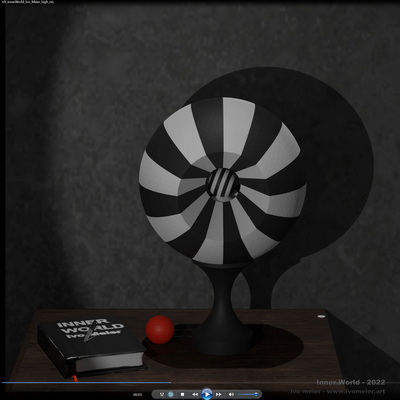 To a large extent Digital Art has been disregarded by the art market - here and there a side note: Andy Warhol experimenting with digital art back in 1984. While disregarded, there always has been an ever growing community believing in digital art - a subculture vivid and steadily growing on platforms like DeviantArt. The art market exploded just recently, when Beeple sold his NFTs for a 69 million USD. Suddenly art market players started to write about digital art and Nifties. Some writing articles not even knowing more then buzzwords - jumping on the train, that already left the railway station.
To a large extent Digital Art has been disregarded by the art market - here and there a side note: Andy Warhol experimenting with digital art back in 1984. While disregarded, there always has been an ever growing community believing in digital art - a subculture vivid and steadily growing on platforms like DeviantArt. The art market exploded just recently, when Beeple sold his NFTs for a 69 million USD. Suddenly art market players started to write about digital art and Nifties. Some writing articles not even knowing more then buzzwords - jumping on the train, that already left the railway station. 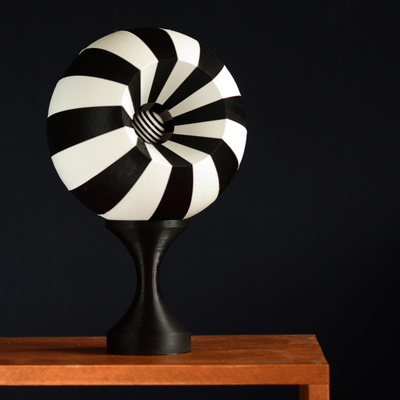 While digital art emerges out of its niche from platform such as Devian-Art to digital art market places (Opensea/Rarible) the two art discipline do not merge yet. Art exhibition endorse NFT and the technology, but Digital Art remains Digital - conventional art remains conventional art. Having said that, I am very convinced, that the strong segregation between the two art disciplines (and related art market) need to be pulled down. Market player start to move between the discpline and artist mesh-up digital and conventional art, but even more important, the artist start to move between digital art and traditional art. This process has started in niches, but we are far away from the full potential of the endless possibilities.
While digital art emerges out of its niche from platform such as Devian-Art to digital art market places (Opensea/Rarible) the two art discipline do not merge yet. Art exhibition endorse NFT and the technology, but Digital Art remains Digital - conventional art remains conventional art. Having said that, I am very convinced, that the strong segregation between the two art disciplines (and related art market) need to be pulled down. Market player start to move between the discpline and artist mesh-up digital and conventional art, but even more important, the artist start to move between digital art and traditional art. This process has started in niches, but we are far away from the full potential of the endless possibilities. -
The digital twin created utilizing 3D Software from CAD, digital sculpting to photogrammetry is the source for different form of art in the real and digital world
- Sculpture has since ever been my focus of interest. It is the art discipline, where the digital twins emerge in the real world through 3Dprinting
-
Digital Art offers a wide range of art form. The digital twin accelrates digital art in the real world. Combined with other digital art forms the digital twin emerges in the virtual reality and the metaverse.
-
Combining other traditional art and art media with digital art and digitally created sculpture vanish the boundaries & limits even further
-
Nifties (NFT) enables art collectors to acquire and own digital art works. Artwork registered on the blockchain sold for crypto currencies. NFT challenges the art market - sooner or later.
Only once the the boundaries and limits between the digital and traditional art forms will vanish, digital art and the NFT technology will unfold its full potential.
- Is it digital? - Is it real? - Is it art?
- It iss the art lover to decide.
- I do what I love to do.
External Links (Rarible.com)
Silence - Animation on Rarible.com (external Link)





